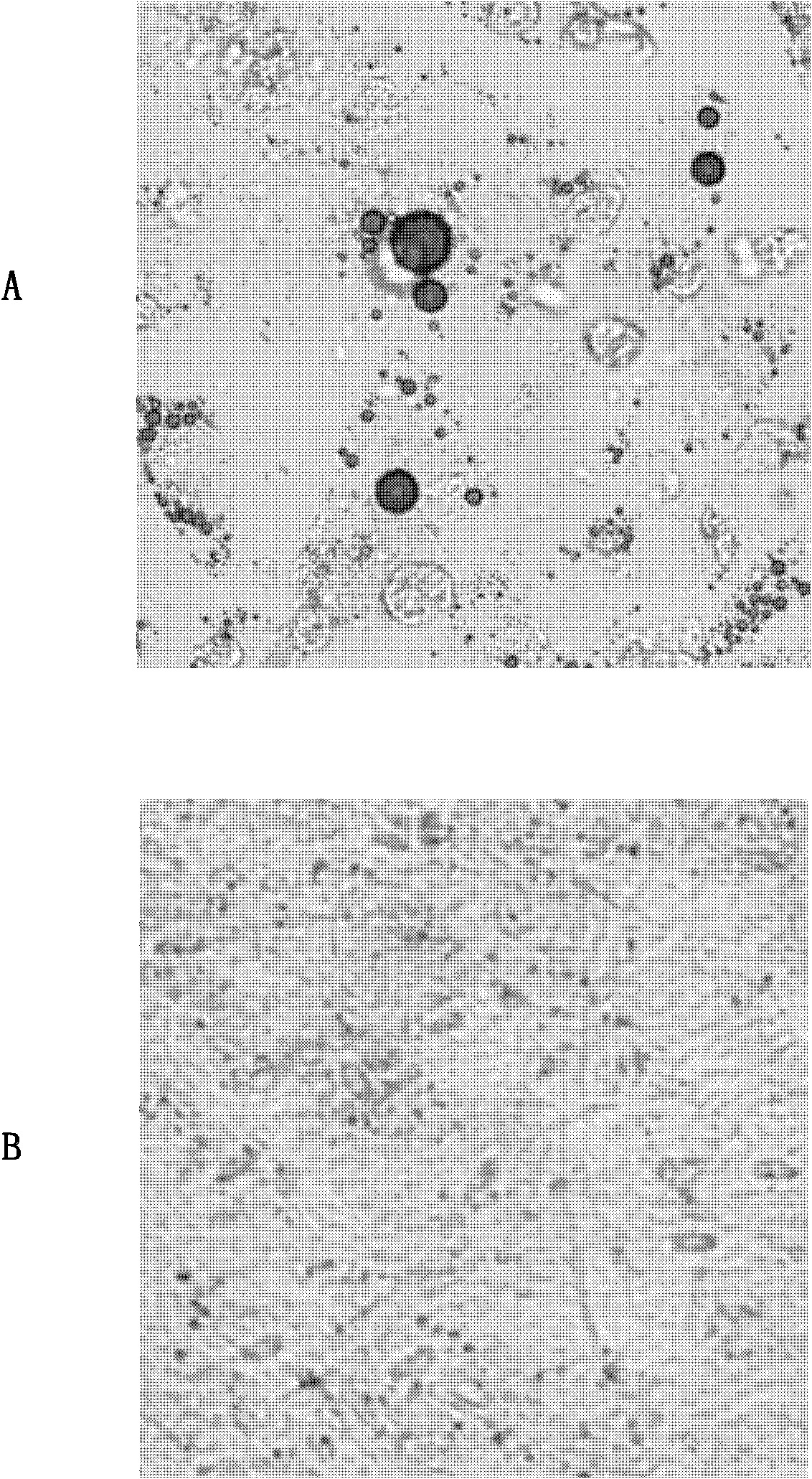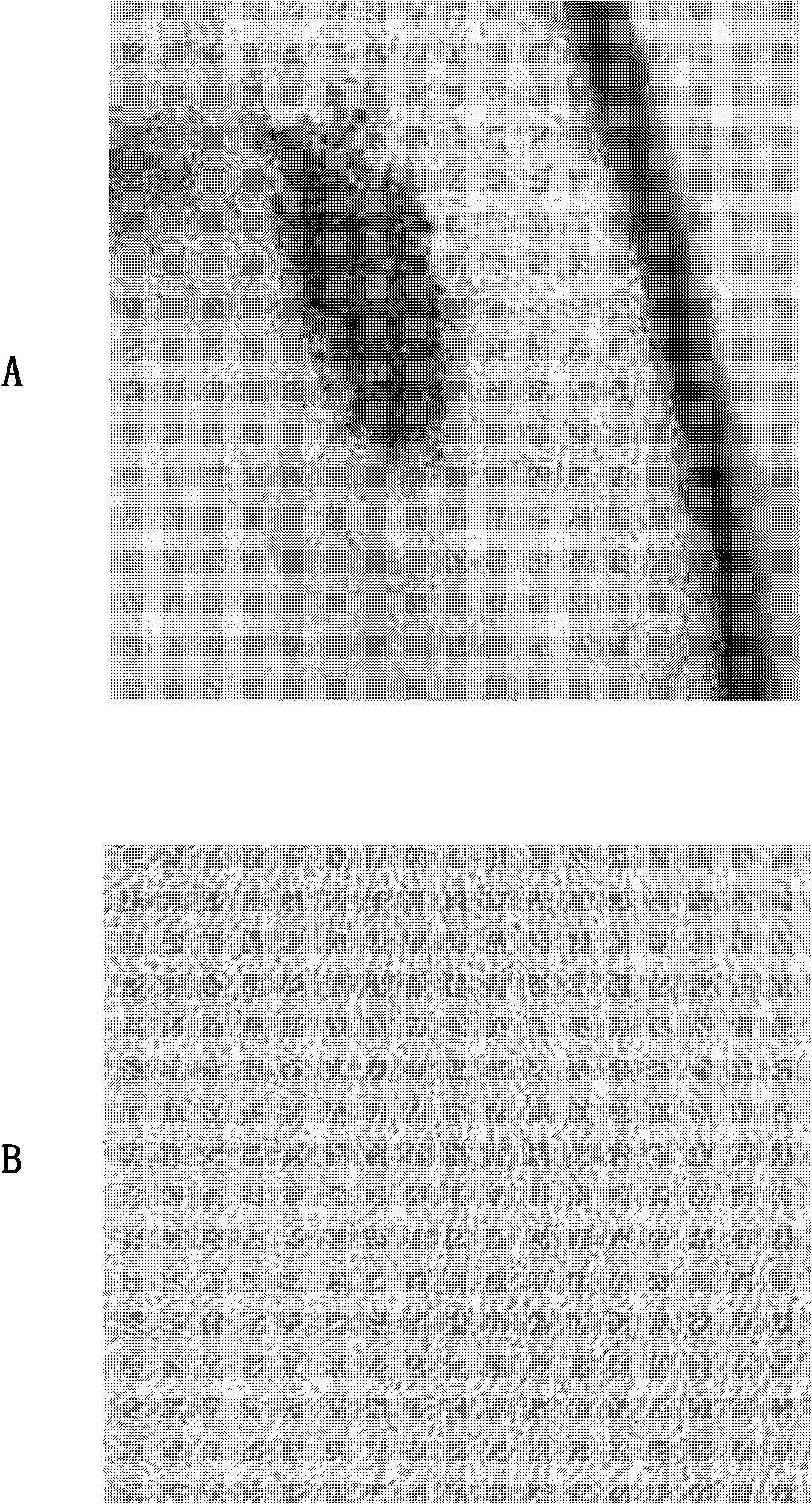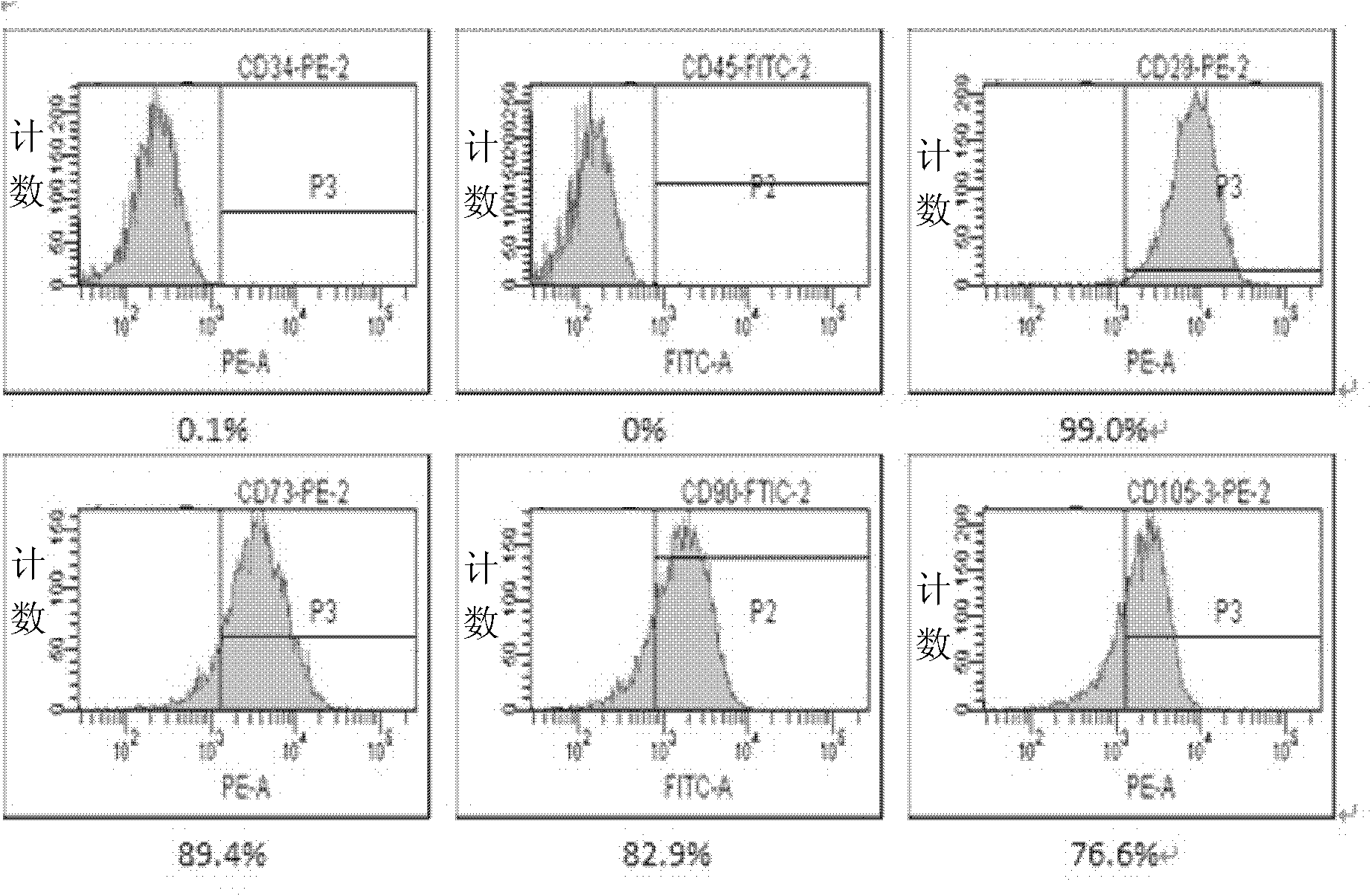Separating method and application of fat stem cells
An adipose stem cell and adipocyte technology, applied in animal cells, vertebrate cells, bone/connective tissue cells, etc., can solve the problems of low purity of adipose stem cells, unfavorable differentiation induction, and poor anti-aging effect.
- Summary
- Abstract
- Description
- Claims
- Application Information
AI Technical Summary
Problems solved by technology
Method used
Image
Examples
Embodiment 1
[0110] Example 1 Separation of Adipose Stem Cells
[0111] 1. Receive adipose tissue
[0112] Wipe the outer wall of the aseptic adipose tissue collection bottle with 75% alcohol; the sterile needle draws deep adipose tissue from the human body, and moves it to the receiving container within 1 hour.
[0113] 2. Aliquot Adipose Tissue
[0114] Each 125ml storage bottle is divided into 50ml of adipose tissue, and a 10ml pipette is used to absorb the lower layer of red liquid in the fat collection bottle, discard it, and mix the remaining upper layer of fat before subpackaging.
[0115] 3. Washing Adipose Tissue
[0116] Add 50ml of sodium chloride injection into a 125ml storage bottle, tighten the cap, shake vigorously for 3 minutes to fully wash the adipose tissue and remove blood cells, then stand still for 3-5 minutes to separate the different phases, and suck off the lower aqueous phase;
[0117] Repeat the above operation three times until the lower layer is relatively c...
Embodiment 2
[0124] Embodiment 2 primary cell culture, harvest and subculture
[0125] 1. Primary Cell Culture
[0126] Place the culture bottle flat in a carbon dioxide constant temperature and humidity incubator. Culture conditions: 37±0.5°C, carbon dioxide volume fraction 5±0.2%. In the 24th hour of the primary culture, a full volume of medium was changed. After that, the medium was changed every 3 days, and the culture was carried out in a constant temperature and humidity incubator with carbon dioxide.
[0127] 2. Primary Cell Harvesting
[0128] After about 7 days, when the area percentage of the primary cultured cell clone reaches 70%-80%, digest and harvest. Add digestive enzymes (digestive enzymes are 0.125% Trypsin ~ 0.01% EDTA solution) to the culture bottle, and place it at room temperature (20-25°C) for 15-25min before use, every 75cm 2 Add 2ml of digestive enzyme solution), the digestion time is 1.5-2.5min, add 2-3ml of medium and blow the bottom of the bottle repeatedly...
Embodiment 3
[0133] Example 3 Adipogenic Induction of Adipose Stem Cells
[0134] 1. Dilute the cultured stem cells at 1.5×10 5 The density of each well was seeded in a six-well plate for adipogenic induction experiments. The specific method is: add 1 μmol / L dexamethasone, 10 μmol / L insulin, 200 μmol / L indomethacin, and 0.5 mmol / L isobutylmethacin to the basal medium (DMEM+10% fetal bovine serum) respectively. Xanthine-based xanthine was used to prepare adipogenic induction medium, and samples cultured in normal medium were used as the negative control group for adipogenic differentiation experiments. The solution was changed twice a week until the observation of adipogenic staining was carried out. All the above groups were subjected to parallel experiments (n=3).
[0136] First pour off the culture medium carefully and gently, rinse gently with D-hanks, and add 10% neutral formaldehyde to fix the cell membrane for 30 minutes. Add 0.5% Oil Red O (add 1.5...
PUM
 Login to View More
Login to View More Abstract
Description
Claims
Application Information
 Login to View More
Login to View More - R&D
- Intellectual Property
- Life Sciences
- Materials
- Tech Scout
- Unparalleled Data Quality
- Higher Quality Content
- 60% Fewer Hallucinations
Browse by: Latest US Patents, China's latest patents, Technical Efficacy Thesaurus, Application Domain, Technology Topic, Popular Technical Reports.
© 2025 PatSnap. All rights reserved.Legal|Privacy policy|Modern Slavery Act Transparency Statement|Sitemap|About US| Contact US: help@patsnap.com



